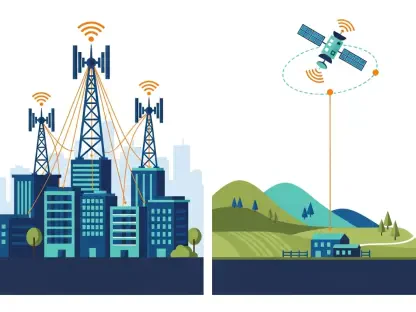In an era where seamless internet connectivity is as crucial as basic utilities, the evolution of broadband deployment strategies is taking center stage across the globe. The revamped Broadband Equity, Access, and Deployment (BEAD) initiative, led by the National Telecommunications and Information Administration (NTIA), exemplifies the shifting landscape of broadband provision, amplifying the need for adaptive strategies that embrace diverse technologies.
Current Trends in Broadband Deployment
Adoption Statistics and Growth Trends
Recent statistics indicate a remarkable increase in broadband adoption rates worldwide, underscoring the pivotal shift toward comprehensive connectivity. A report highlights that broadband access has burgeoned exponentially, catalyzed by strategic initiatives and investments. The emerging trends reveal a growing inclination toward flexible deployment technologies, encompassing not only traditional fiber-optic networks but also pioneering alternatives like fixed wireless access (FWA) and low-earth orbit (LEO) satellite systems.
Real-world Applications and Case Studies
Several initiatives have set exemplary benchmarks in broadband deployment, showcasing innovative approaches that integrate technological advancements with community needs. Case studies from various regions demonstrate the efficacy of tailored strategies, underscoring regions and companies at the forefront of deploying cutting-edge broadband solutions. These examples serve as a testament to the dynamic evolution in broadband technology, prominently steering the global digital transformation.
Expert Insights on Deployment Strategies
Experts within the telecommunications field emphasize the importance of a balanced approach when deploying broadband, where the interplay between cost, technology, and accessibility is crucial. The recent regulatory shifts pave the way for previously unendorsed technologies to gain prominence but introduce complexities that require careful navigation. Challenges such as regulatory uncertainties and competitive pressures from LEO satellite operators underscore the need for prudent planning and effective policy frameworks.
Furthermore, expert opinions highlight potential solutions to counteract these challenges. They advocate for a collaborative approach among stakeholders to ensure that new regulatory frameworks do not inhibit technological innovation or accessibility. The balance between fostering competitive markets and ensuring equitable access to broadband is essential for an inclusive digital future.
The Future of Broadband Deployment
The future of broadband deployment is poised for transformative changes, influenced by technological advancements and strategic innovations. These developments herald potential benefits, including enhanced connectivity that fosters socio-economic integration. However, the journey is not devoid of challenges; regulatory issues and technology disparities pose significant hurdles that necessitate coordinated global efforts.
While the NTIA’s revised rules introduce more adaptable infrastructures, the broader implications are far-reaching. As broadband technologies continue to advance, industries and communities worldwide bear the prospect of unprecedented transformations. The focus on adaptive strategies is expected to catalyze new opportunities, reshaping the socio-economic landscape across continents.
Conclusion
Examining the nuanced developments in broadband deployment reveals a complex yet promising trajectory for the global telecommunications landscape. While the new regulatory environment introduced flexibility and cost-effectiveness, it undeniably presented stakeholders with new challenges. As stakeholders navigate these changes, a dynamic recalibration of priorities will be crucial to harness emerging technologies effectively. The evolution of broadband technologies throughout the digital age continues to unfold, requiring industries and communities to remain adaptable and forward-thinking.
As this transition underscores the symbiotic relationship between policy, technology, and socio-economic growth, ongoing discussions and stakeholder collaboration will be essential, ensuring that the aspirations for universal broadband connectivity are realized efficiently and equitably.









